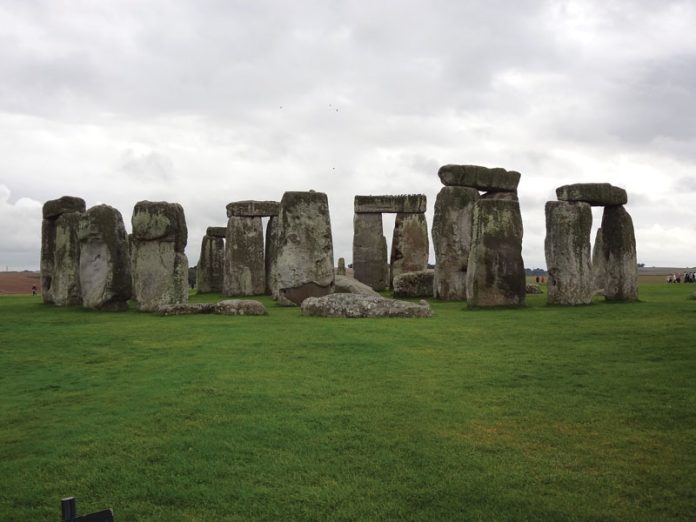
Stonehenge, arguably the most famous deliberately, yet mysteriously, placed arrangement of stones, has been a source of awe throughout recorded history. While its true purpose is still debated, as well as who built it over several millennia, it remains an iconic structure that has inspired millions of people to visit and ponder. Originally thought to be built as a Druid calendar, it is now known to pre-date the Druids. It has been speculated to have been built as anything from a meeting place, a site for ritualistic sacrifice, a sign of the wealth of the territorial leaders of the time, an agricultural calendar, and a sort of astrological clock, among dozens of other hypotheses.

As it was constructed in phases over thousands of years, it is likely to have served many purposes. Built of Sarsen, a type of sandstone, and an array of igneous rocks generically called “Bluestone,” this arrangement is thought to have begun being built at the end of the Stone Age, around 5,000 years ago. Evidence of additions and alterations as recently as 2,000 BCE show that it remained a work in progress for some time.
There are thousands of sites around the world that can be considered to be stone circles of one form or another. In some cases, the origin and purpose are known or understood, and in many if not most others, there remains some mystery. Some sites are potentially examples of nature depositing stones in a circular-like fashion, while others may be the work of hoaxes. Nonetheless, there are numerous examples of stone, and even wood circles that were placed or constructed by our ancestors for myriad purposes.
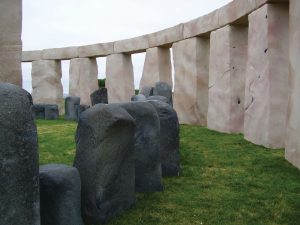
By Alun Salt is licensed under CC BY-SA 2.0.
Stonehenge Replicas
Stonehenge is hardly the only example of man-made, circular arrangements of monoliths. The British Isles are littered with them, as are many other sites throughout the world. Most are thought to be some kind of astronomical calendars or ritual sites. There are also numerous replicas of Stonehenge, with varying degrees of accuracy and whimsy.
Mimicry and flattery aside, the world abounds in replicas of Stonehenge. Many attempt to be true to the dimensions and scale of the original. Some are built of stone, while others are made of much lighter-weight material. These can be found on both public and private lands, on the campuses of institutions, and even in some backyards.
In 1918, a World War I concrete monument was built in the state of Washington, known as the Maryhill Stonehenge. It was designed to look like Stonehenge is presumed to have looked at the time of its construction. In 2004, another installation, this time on the campus of the University of Texas of the Permian Basin, was constructed to be of similar size, shape and orientation of the original formation in England. At another college campus, Missouri S&T, a half-scale replica of Stonehenge, built out of granite was installed. The world’s only “exact” replica of Stonehenge, known as “Esperance Stonehenge” was made of granite and built in Western Australia. It opened to tourists in 2011.
Several replicas have been made of lightweight materials such as foam and fiberglass. Foamhenge in Virginia is full-sized and astronomically aligned. A similarly built full-sized replica in Alabama (Bamahenge) was made of fiberglass. In 2005, a life-size replica of Stonehenge (British Foamhenge) was made for British television, built from carpet roll tubes and polystyrene. These have been placed in storage, with no known plan to display them again.
The world’s smallest, yet to-scale replica of Stonehenge was constructed at the National University of Singapore. This 3-D replica is built of silicone and measures just 80 micrometers (.003 inches) in diameter and is referred to as a Stonehenge microstructure. Two other replicas of note are a full-sized limestone Stonehenge replica built on private land in Fortine, Montana, and Stonehenge Aotearoa, in New Zealand which aligns with astronomy seen from the Antipodes.
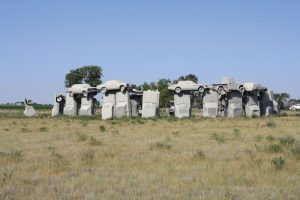
By whitewall Buick is licensed under CC BY 2.0.
Stonehenge “Tributes”
Replicas of Stonehenge built of various materials, intended as parodies or art abound. These structures have been made of everything from cars, appliances, phone booths, straw bales and even toilets. Carhenge, built in 1987, in Nebraska is one of the better-known tributes. In Ontario, Canada, one can visit Strawhenge. Phonehenge can be found in Myrtle Beach, South Carolina, made up of retired British phone booths. The end of the Cold War saw the creation of Tankhenge in Berlin, made of Soviet-era tanks. Truckhenge, in Topeka, Kansas, is a farm art installation made of antique trucks jutting out of the ground.
Bladehenge is a piece of public art, located about two miles from the actual Stonehenge. Made up of propellers and turbines, it was installed at Solstice Park in 2013. Steel Henge, located in another UK park, is made up of large iron ingots.

By d26b73 is licensed under CC BY 2.0.
Many Stonehenge-like installations have been temporary, built for festivals like Burning Man or the Glastonbury Festival. These have included Strawhenge, Mudhenge and Twinkiehenge. In 2007, renowned graffiti artist Banksy, designed and installed a Stonehenge-like structure made out of portable toilets. Still, other temporary henges have moved around on tour. In 2012, an inflatable Stonehenge “bouncy castle” called “Sacrilege” was displayed around London and then on to other venues internationally.
Other short-lived “henges” have been removed because of zoning violations or weather. These include Phonehenge West in Los Angeles, and Fridgehenge in New Mexico (a Stonehenge tribute built from refrigerators does still stand in Hamilton, New Zealand). Numerous “snowhenges” have been built all over the world, that melt in the subsequent spring.
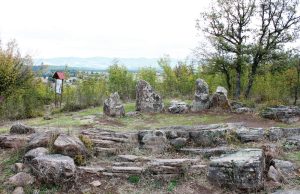
By Bin im Garten is licensed under CC BY-SA 3.0.
Other Intentional Solar Alignments
Not all nods to Stonehenge are deliberate copies of the famed stone circle. Many modern cities have structures that are designed to align with astronomical events. One can debate whether Stonehenge inspired any or all of these, but their purpose is nonetheless intended to feature or exist symbiotically with astronomical phenomena. These range from public sculpture to architecture, to city planning.
In North Dakota, a 2005 work of art known as Mystical Horizons, serves as a solar calendar. It consists of variously-sized granite walls. The Armed Forces Memorial in Staffordshire, UK, aligns perfectly with the sun to illuminate its center at 11 a.m. on Armistice Day to mark the end of World War I. At MIT’s Infinite Corridor, the sun shines in the center of the hallway exactly twice each year on the equinoxes. This intentional confluence has been dubbed “MITHenge.”
Urban planning examples include England’s Box Tunnel which aligns with the sun, not on any date of solar significance, but the birthday of famed English Civil Engineer Isambard Kingdom Brunel. In Raleigh, North Carolina, the street grids are aligned with the sun to form what locals call “Raleighhenge.” More famously though, is Manhattanhenge in New York City. The sun aligns with the street grids on Manhattan Isle such that the rising sun in December and January, as well as the setting sun in May and July, comport with the street grid lines.
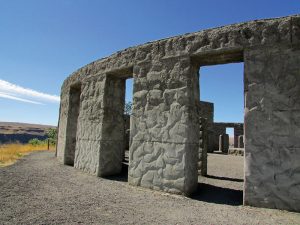
By Landscapes in The West is marked with Public Domain Mark 1.0.
Other Places to See Stone Circles Around the World:
1. Syria is home to the oldest stone circle on this list, boasting the Rujm el-Hiri, a series of concentric circles which archaeologists date back to the early Bronze Age almost 5,000 years ago. The ?yu Stone Circles are almost as old, up to 4,000 years, and a series of concentric circles in Japan.
2. In northern Africa, in Morocco is the Mrouza stone circle. Comprising 167 stones, this arrangement dates back as far as the 5th century BCE.
3. Located in Brazil, is the so-called “Amazon Stonehenge” or “Tropical Stonehenge.” This pre-Columbian monolith is laid out in a circle and is thought to have been used for rituals and as a calendar much like Stonehenge.
4. Though not always circles, Australia has numerous examples of Aboriginal stone arrangements. Two of the largest are in the state of Victoria. These include the Carisbrook stone arrangement and the Kuyang/Lake Bolac stone arrangement.
5. Outside o f the United Kingdom and Ireland, there are other European sites with stone circles. In Bulgaria, there is the Dolni Glavanak Cromlech, an oval design, dating between the 8th and 6th centuries BCE. The “Polish Stonehenge,” in Poland, is the second largest arrangement of stones in Europe, comprising 12 circles, dating back to the first or second century CE.
This story about Stonehenge alternatives previously appeared in Rock & Gem magazine. Click here to subscribe. Story by Chris Bond.















